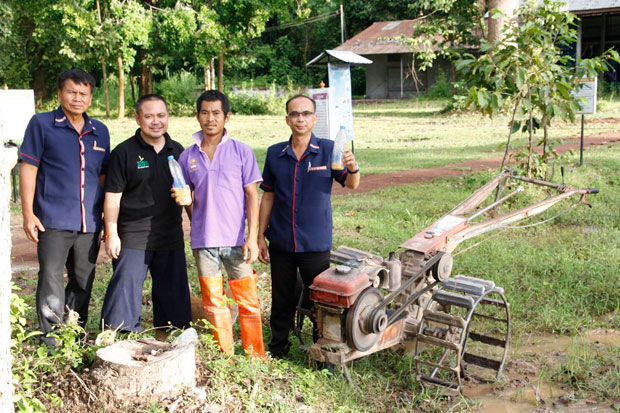
NAKHON PHANOM: A local administration organisation says it has been successfully testing an oil extracted from a local tree as an alternative fuel for farm machinery, and has found it to be more efficient than diesel.
Bancha Srichaluang, president of Phiman tambon administration organisation in Na Kae district, said the organisation started to testing oil extracted from the yang na tree, or hairy-leafed apitong (Dipterocarpus alatus), as biodiesel for use by farm machinery, including motorised ploughs, farm tractors and pumps, two years ago.
The experiment began with an equal mixture of yang na oil and diesel. The diesel content was then gradually reduced and finally completely omitted and there had been no problem with the test engines, he said.
Oil retrieved from holes drilled in yang na trees was left one night for residue to settle and then it could be used in engines, he said.
Past use showed that a mechanised plough ran for three hours on one litre of yang na oil compared with one hour on diesel, Mr Bancha said.
His organisation used yang na oil because there were about 300 of the trees in Ban Phiman village, tambon Phiman. Some of the trees were over 50 metres tall and 200-300 years old. They were a great source of oil, he said.
His TAO was growing more yang na trees to supply the oil.
According to the UN's Food and Agriculture Organisation the yang na tree produces an oleo-resin that can be extracted and used as a coat for waterproofing paper, as a varnish for boats, walls and furniture. The oleo-resin and also the bark of the tree have medicinal properties. It is found in Thailand, Cambodia, Laos, Vietnam and the Philippines.
The same trees line many roads in Chiang Mai, often decorated with an orange cloth and protected by a conservation society.

Officials of the local administration organisation drill a hole in a yang na tree to extract its oil.

Bancha Srichaluang, president of Phiman tambon administration organisation, shows a motorised plough being run on yang na oil at a demonstration field.